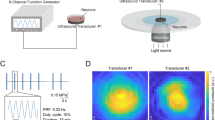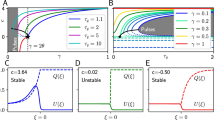Summary
The ventricular and auricular myocardium was found to possess an ability to accommodate to applied electrical current pulses.
Accommodation to cathodal current flow was observed even when nonpolarizable electrodes were employed and also when tests were made with chronically implanted metal electrodes in intact anesthetized dogs.
Accommodation tended to attain its maximum within 40 to 45 msec after the beginning of the conditioning pulse. It reduced the facilitatory action of the conditioning pulse by 50 to 60%.
Post-cathodal and post-anodal changes in excitability occurred. They were of 10 to 15 msec duration following a 70 msec conditioning current flow. They were of lesser magnitude then the average residual facilitation remaining just before termination of conditioning stimuli.
Evidence that various circumstances can modify the ability of cardiac tissue to accommodate to intrinsic and applied stimuli was discussed. The possible importance of this phenomenon to the maintenance of effective action of the heart under abnormal circumstances was considered.
Similar content being viewed by others
References
Lee, D. H. K., The Physiology of Tissues and Organs (Springfield, Ill. 1950).
Hill, A. V., Excitation and accommodation in nerve. Proc. Roy. Soc. B119, 305–355 (1936).
Araki, T. andT. Otani, Accommodation and local response in motoneurons of toad's spinal cord. Jap. J. Physiol.9, 69–83 (1959).
Koizumi, K., J. Ushiyama, andC. McC. Brooks, Effects of hypothermia on spinal neurons stimulated by linearly rising current. J. Neurophysiol.1960 (in press.).
Ushiyama, J. andC. McC. Brooks, Stimulation of heart cells by linearly rising currents and the effects of hypothermia. Amer. J. Physiol.1960 (in preparation).
Bard, P., Medical Physiology 10th ed., p. 887 (St. Louis 1956).
Gilson, A. S. Jr. andH. B. Peugnet, Effects upon cardiac muscula-ture of subthreshold electrical currents. Amer. J. Physiol.100, 671 (1932).
Gilson, A. S. Jr., The increased accommodation to electric currents produced by vagal inhibition of the turtle atrium. Amer. J. Physiol.127, 333 (1939).
Mazzella, H. M., Accommodation in heart muscle. Physiologist.2, 89 (1959).
Brooks, C. McC., O. Orias, B. F. Hoffman, andE. E. Suckling, Excitability of the Heart (New York 1955).
Torres, J. C., E. T. Angelakos, andA. Hegnauer, Strength-duration curves in the hypothermic dog heart. Amer. J. Physiol.196, 1005 (1959).
Brooks, C. McC., J. L. Gilbert, M. E. Greenspan, G. Lange, andH. M. Mazzella, Excitability and Electrical Response of Ischemic Heart Muscle. Amer. J. Physiol.1960 (in press).
Wiggers, H. C. andC. J. Wiggers, The interpretation of monophasic action potentials from the mammalian ventricle indicated by changes following coronary occlusion. Amer. J. Physiol.113, 683 (1935).
Samson, W. E. andA. M. Scher, Mechanism of acute ST changes in experimental coronary occlusion. Fed. Proc.18, 136 (1959).
Brooks, C. McC., Factors integrating the activity of body Organs and the action of disorganizing influences. Ann. Fac. Med. Montevidéo44, 205–213 (1959).
Wiggers, C. J., Physiology in Health and Disease, p. 87 (Philadelphia 1949).
Brooks, C. McC., J. L. Gilbert, G. Lange, andE. E. Suckling, Accommodation in the mammalian Heart. Fed. Proc.19, No. 1 (1960).
Glasser, O., Medical Physics. Vol. 1, pp. 1119–1120 (Chicago 1944).
Katz, B., The response of medullated nerve to alternating high-frequency stimulation. J. Physiol.86, 285 (1936).
Hodgkin, A. L., The ionic basis of electrical activity in nerve and muscle. Biol. Rev.26, 339 (1951).
Hodgkin, A. L. andA. F. Huxley, A quantitative description of membrane current and its application to conduction and excitation in nerve. J. Physiol.117, 500 (1952).
Schoepfle, G. M., Kinetics of slow changes in membrane potential induced by direct current polarization of single nerve fibers. Amer. J. Physiol.196, 1 (1959).
Johnson, F. H., H. Eyring, andM. J. Polissar, The Kinetic Basis of Molecular Biology. Chap. 12 (New York 1954).
Author information
Authors and Affiliations
Additional information
With 1 figure in 5 details
Supported by a grant from the Life Insurance Medical Research Fund.-In honor of Prof.B. Kisch's, M.D. 70th birthday.
Rights and permissions
About this article
Cite this article
Brooks, C.M., Gilbert, J.L., Kavaler, F. et al. The phenomenon of accommodation in the ventricular myocardium. Archiv für Kreislaufforschung 33, 102–108 (1960). https://doi.org/10.1007/BF02119762
Received:
Issue Date:
DOI: https://doi.org/10.1007/BF02119762




